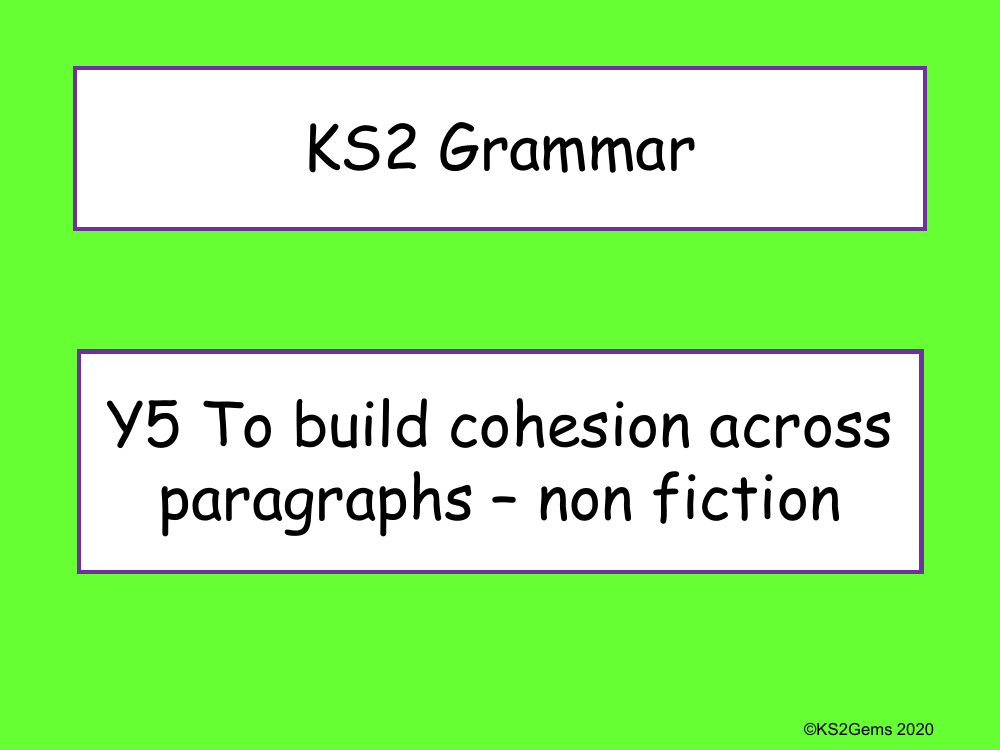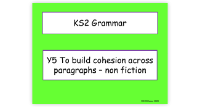Cohesion across Paragraphs - Non Fiction Presentation

English Resource Description
KS2Gems' 2020 resource on building cohesion across paragraphs in non-fiction texts is a comprehensive PowerPoint presentation tailored for Year 5 grammar lessons. The resource serves as a repository of instructional materials that teachers can utilise according to their class's needs. It includes whole-class inputs, group and paired activities, and opportunities for independent learning. The teacher has the discretion to adjust the level of support provided to students. The presentation is divided into sections, each focusing on different aspects of cohesion such as understanding what cohesion is, identifying cohesive devices, and exploring the ways writers achieve cohesion across various non-fiction text types like discussions, explanations, instructions, persuasive texts, recounts, and reports.
The presentation elucidates the concept of cohesion as the glue that holds a text together, ensuring that paragraphs and their meanings are coherent. It highlights various cohesive devices, including pronouns, relative clauses, adverbials, parenthesis, concise noun phrases, determiners, and conjunctions. For each non-fiction text type, specific cohesive devices are recommended to achieve cohesion, such as the use of formal language, consistent verb tenses, and organisational devices like bullet points and sub-headings. Additionally, the resource provides examples of introductory and concluding paragraphs, discusses the importance of using formal or informal tones appropriately, and differentiates between personal and impersonal language. To further aid understanding, the resource suggests activities like creating text maps and hunting for cohesive devices within non-fiction excerpts, supporting children in recognising and applying these concepts in their writing.
